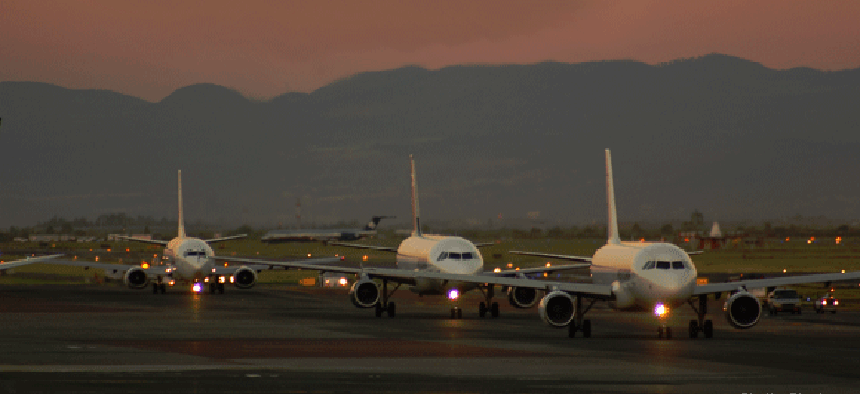What's keeping FAA's NextGen air traffic control on the runway?


Connecting state and local government leaders
New technology for the FAA's Next Generation Air Transportation System is coming online -- slowly -- but non-technical issues are delaying many of the program's benefits.
Ten years into the program, new technology for the Federal Aviation Administration’s Next Generation Air Transportation System is gradually coming online. But non-technical issues are delaying many of the promised benefits and creating skepticism in the airline industry.
“NextGen is more than a technical platform, it has to be useable,” FAA Administrator Michael P. Huerta told a House panel July 17.
Implementing the program is a delicate balance of integrating technology with training and policy across multiple air carriers, the FAA and airports. New GPS-based navigation systems have to be installed in aircraft, and new tracking systems, monitors and software are needed in FAA air traffic control facilities and airports. Decisions on enabling the use of new take-off, landing and in-flight navigation procedures then have to be made on a user-by-user, location-by-location basis.

Difference in flight paths of planes approaching Houston airport.
Still, “we are delivering NextGen on time and on target,” Huerta told the House Transportation and Infrastructure Subcommittee on Aviation.
Transportation Department Inspector General Calvin L. Scovel III disagreed. He cited an FAA internal study that concluded that completion of the NextGen program could be 10 years late and cost two to three times the initial $40 billion price estimate.
He said the problems are the result of inadequate planning, slow decision making and a change-averse FAA culture. And there also is what one congresswoman called “the elephant in the room”: funding.
“We don’t believe funding has been an issue” for the NextGen program to date, Scovel said. But that could change with sequestration and a House Transportation budget for fiscal 2014 that cuts NextGen spending for the first time.
Scovel urged the committee to “hold FAA’s feet to the fire,” to produce more near-term benefits that could encourage airlines to more swiftly adopt NextGen technology.
The Next Generation Air Transportation program began in 2004 to transition the Air Traffic Control system from outdated ground-based radar to satellite-based GPS. This requires new technology for the FAA’s basic ground infrastructure as well as new systems for air traffic controllers and aircraft.
NextGen was to be in place by 2025, but that appears to be an increasingly difficult deadline to meet. Although elements of the system now are in place and new navigation procedures are producing cost and scheduling benefits at some airports, Scovel said flatly that “2025 is off the table.”
Key pieces of technology for enabling NextGen include the Standard Terminal Automation Replacement Systems to update equipment used by air traffic controllers, an effort that dates back to 1999. STARS was supposed to be completed by 2017 at a cost of $438 million, but the cost and schedule now are uncertain.
The En Route Automation Modernization system, which replaces and enhances software at 20 FAA centers that manage high-altitude air traffic, is the primary platform for processing flight data. That program was to be done in 2010 for $2.1 billion, but has been pushed back to 2014 with an added $330 million in costs.
Huerta cited benefits that have been gained from initial deployments of Automatic Dependent Surveillance-Broadcast technology, which uses GPS positioning data rather than ground radar to provide more accurate location information to pilots and controllers. This technology can allow more efficient use of air space and of take-off and landing slots at airports. Huerta said use of the system by some aircraft have provided an estimated $2.3 million in fuel savings for airlines at Washington’s Reagan National and Dulles International airports. At Atlanta’s Hartsfield, it has increased take-offs and landings by 10 percent and saved an estimated $20 million in fuel.
But Scovel said only a small percentage of eligible flights are using the technology, and airlines remain skeptical of the benefits of cockpit upgrades.
The wild card in FAA’s ability to complete deployment of NextGen is funding. The House Transportation bill for fiscal 2014 cuts NextGen capital investment funding by $43.6 million.
“What that forces us to do is make tradeoffs between maintenance of the current infrastructure and investment in NextGen,” Huerta said. He said the FAA is working with industry now to prioritize NextGen activities and identify areas for cutting under the current budget because of sequestration.




